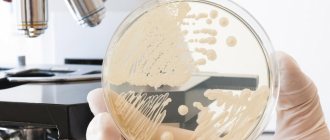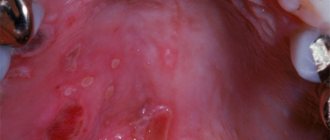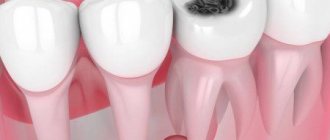Candidiasis is a common infectious disease caused by fungi of the genus Candida. They belong to opportunistic microflora and live in the body of almost every person who does not have health problems. The disease develops only with a decrease in immune strength or with the progression of concomitant pathologies. Immune dysfunction leads to an imbalance of microflora in the body, which contributes to the activation and uncontrolled proliferation of fungal infections. Depending on the etiology, nature and severity of the course, candidiasis can be visceral, bacterial, or disseminated. Each type is treated according to a separate regimen, under the strict supervision of a doctor. It is important to diagnose the disease in the initial stages of development, which improves the prognosis for a quality cure and full recovery. Therefore, it is necessary to consult a doctor as early as possible, because over time the pathology can worsen and be complicated by dangerous, sometimes irreversible consequences. In medicine, modern, effective and safe methods are used to diagnose and treat fungal diseases, guaranteeing the most positive results and the absence of complications.
Candida mushrooms: from conditionally pathogenic to pathogenic
These oval or round unicellular microorganisms are present in the normal microflora of most healthy people. They are well protected from external factors and feel quite comfortable at human body temperature.
The very presence of Candida fungi in the body does not equate to a disease: the development of the pathological process begins if, under the influence of any factors, the fungi begin to actively multiply.
In most cases, this occurs due to decreased immunity.
The onset of the disease does not indicate a change in the properties of the fungus, but rather a change in the state of the body, in particular, a sharp decrease in its protective mechanisms.
to contents ^
Causes of candidiasis
Intensive reproduction of the fungus can be provoked by various factors:
- Prolonged hypothermia or, conversely, being in a climate that is too hot and humid.
- A disease, especially if antibacterial drugs are used in its treatment.
- Severe stress.
- Changes in hormonal levels (with endocrine disorders, use of hormonal drugs, during pregnancy).
- Choosing underwear that is the wrong size or made from synthetic materials.
to contents ^
Natural Healing
Although treatment with pharmaceutical drugs is most successful, there are methods of prevention and treatment with natural remedies. Bad eating and lifestyle habits can lead to the return of fungi, so the following rules are necessary:
- limit your consumption of foods containing carbohydrates and refined sugar;
- limit your caffeine intake – don’t drink more than three cups a day;
- eat garlic;
- eat foods rich in B vitamins;
- drink a cup of natural yogurt or kefir every day - yogurt contains lactic acid, which helps maintain a normal number of beneficial bacteria;
- wear cotton rather than synthetic underwear;
- Take cool showers – fungi and other bacteria love warm, moist environments because they thrive best in such conditions;
- change towels more often;
- After bowel movements, wipe the anus from front to back to avoid microorganisms entering the vagina.
Types and symptoms of candidiasis
Manifestations of the disease are very diverse and depend on the specific location of development of the inflammatory process.
Oral candidiasis
Oral candidiasis is most common in childhood. It manifests itself as redness of the mucous membranes of the throat, gums and tongue. Swelling develops. As the disease develops, areas of white plaque with a cheesy consistency form on the oral mucosa. If treatment measures are not taken, their number increases, and erosions occur under the plaque.
When oral candidiasis becomes chronic, damage to the mucous membranes of the nose, pharynx and esophagus is possible.
to contents ^
Candidiasis of the skin
Fungal pathology can spread in the folds of the skin: in the armpits, under the mammary glands. The folds between the fingers and toes are affected. In some cases, skin lesions outside the folds are noted.
The disease manifests itself in the form of small blisters. Individual areas merge to form affected areas. Between the toes of the limbs there is peeling of the skin, cracks, and itching. Externally, the palms look like they are burned.
to contents ^
Candidiasis of the genital organs
This type of disease affects the external organs of the reproductive system: in women – the vaginal mucosa, in the stronger sex – the glans penis and foreskin. A clear sign of the disease is copious white curdled discharge accompanied by itching. There is discomfort during intimate contact and when urinating.
Candidiasis localized in the intestines
Most often it occurs as a result of previous intestinal infections and the use of antibacterial drugs. In children, this condition can be caused by poor nutrition.
Intestinal candidiasis is manifested by pain in the abdomen, flatulence, diarrhea, and the presence of white cheesy flakes in the stool.
Fungal infections
Fungal infections are damage to the skin, nails, mucous membranes, and internal organs caused by pathogenic fungi.
Fungal microorganisms are widespread in the environment, some of them are constantly present in the human body (for example, candida is part of the normal microflora of the oral cavity and intestines).
There are infections that are caused by pathogenic fungi that live only in certain areas (endemic mycoses). In such cases, the main routes of infection into the human body are:
- aerogenic – when inhaling spores of pathogenic fungi; the first manifestation of infection may be pneumonia;
- contact – the development of skin lesions as a result of direct contact of the skin with soil containing pathogenic fungi.
With a decrease in the body's defenses and immunodeficiency states (for example, in patients with HIV), opportunistic fungal infections can develop. They occur with increased growth and reproduction of fungi that are constantly present in the body.
The most common group of mycoses are superficial mycoses of the skin and nails. The causative agents of these infections can be transmitted both from person to person and as a result of the spread of pathogens to the skin from the environment. However, the disease does not develop in all cases, since susceptibility to fungal infections may vary from person to person.
Fungi multiply intensively in warm and humid conditions, which causes their frequent localization on the skin of the toes, feet, skin folds, and nails.
Antifungal medications are available to treat infections caused by fungi. Depending on the type of infection and the severity of the disease, these drugs can be used in the form of injections, tablets, ointments, creams, and solutions for topical use.
Synonyms Russian
Mycoses.
English synonyms
Fungal Infections, Mycoses.
Symptoms
Fungal infections of the skin and mucous membranes can manifest themselves with the following symptoms:
- redness of the skin;
- itching, burning;
- skin rashes;
- weeping on the affected areas of the skin (separation of serous fluid through the smallest defects of the epidermis);
- small blisters on the skin that can burst and form crusts;
- peeling of the skin;
- painful sensations in the area of damage to the skin, mucous membranes;
- plaque on the mucous membranes (for example, white cheesy plaque in the mouth, vagina with candidiasis);
- hair loss in the affected areas.
Symptoms of fungal nail infection:
- thickening of nails;
- fragility of nail plates;
- distortion of the shape of nails;
- loss of shine, change in nail color (for example, darkening or yellowing);
- painful sensations in the nail area.
In primary and endemic mycoses, the clinical picture depends on the prevailing involvement of certain organs in the infectious process. For example, with coccidioidomycosis, inhalation of fungal spores can affect the lungs. As a result, they develop:
- cough;
- increased body temperature;
- dyspnea;
- chest pain.
General information about the disease
Fungal infections are diseases of the skin, nails, mucous membranes, and internal organs caused by various types of fungi.
Some types of fungi (for example, candida) are constantly present in the human body without causing harm to health.
Under favorable conditions, these fungi begin to actively multiply, which leads to the development of a fungal infection. Factors contributing to the development of fungal diseases include:
- warm and humid environmental conditions;
- failure to comply with personal hygiene rules;
- increased sweating;
- tight clothing, shoes that do not allow air to pass through well;
- taking antibiotics - they can destroy not only pathogenic, but also beneficial bacteria that form normal microflora, this is fraught with increased growth and reproduction of fungi;
- decreased efficiency of the immune system: the immune system resists pathogens of various diseases; its work may be disrupted when taking certain drugs (for example, glucocorticoids), endocrine diseases (for example, diabetes), or damage to the immune system itself (as with HIV).
The most common forms of fungal infection are local lesions of the skin, mucous membranes, and nails. This group of diseases includes:
- Candidiasis. Candida is a yeast-like fungus. They are permanent inhabitants of the skin and mucous membranes. With a decrease in local and systemic defenses of the body, candida can cause local and generalized (damage to the entire body involving internal organs) fungal infection. Systemic candidiasis most often develops in people with immunodeficiency (for example, in patients with HIV). Cutaneous candidiasis most often develops in areas such as the armpits, gluteal folds, under the mammary glands, and in the spaces between the fingers. In these places, favorable conditions are created for the existence of candida: increased temperature and humidity.
The disease manifests itself in the form of areas of redness of the skin, rashes (small blisters filled with liquid). In the presence of skin diaper rash, erosions (damage to the surface layer of the skin) sometimes occur. These manifestations may be accompanied by burning and itching.
When the periungual skin ridges are affected, swelling and redness of the skin around the nail develops. The spread of infection under the nail plate can cause gradual thickening and discoloration of the nail plates. Onycholysis (detachment) and even nail loss are less common.
- Candidiasis of the mucous membranes. With candidiasis, white plaques and areas of redness of the mucous membrane form in the oral cavity and oropharynx. Painful cracks appear in the corners of the mouth.
Damage to the mucous membranes of the genital organs (usually the vaginal mucosa in women) is accompanied by the formation of a white cheesy coating and discharge. At the same time, a burning and itching sensation is felt in the vagina.
- Dermatophytosis. Dermatophytosis is caused by molds that use the keratin (protein) of the skin, hair, and nails to survive. The infection can be transmitted from people, animals, through contact with infected socks, shoes, or when visiting swimming pools or baths. It is manifested by hair loss in limited areas, peeling, redness of the skin, and itching. When the nail plates are damaged, the nails thicken, their shape and color change, they can become brittle and crumble.
- Pityriasis versicolor. This fungus causes white spots to appear, which become especially visible after sunbathing. There are usually no other symptoms.
The causative agent of pityriasis versicolor is part of the normal microflora of the skin. The disease can manifest itself under certain conditions, for example when the immune system is weakened, during pregnancy.
There are mycoses that are predominantly distributed in certain areas (endemic mycoses). One of them is coccidioidomycosis, the highest incidence of which is noted in the southwestern United States and northern Mexico. The infection can be transmitted by inhaling spores of pathogenic fungi or by skin contact with soil. The disease is characterized by damage to the lungs and skin.
In people with immunodeficiency, fungi that do not cause any symptoms in a healthy person can lead to systemic mycoses. Such infections are called opportunistic.
The causative agents of opportunistic systemic mycoses can be candida, aspergillus and other fungi. The clinical picture consists of damage to the skin and lungs with possible further spread to internal organs: brain, kidneys, liver, gastrointestinal tract, heart valves.
These forms often develop against the background of severe damage to the immune system and significantly reduced body resistance, so the prognosis in many cases is unfavorable.
Who is at risk?
- Sweating intensely.
- Individuals who have a weakened immune system (for example, patients taking glucocorticoid medications)
- Suffering from diabetes.
- Working in damp, warm conditions.
- Those who walk barefoot in public places (gyms, swimming pools).
- Wearing clothes, socks, shoes that have poor ventilation ability.
- Neglecting the rules of personal hygiene, using other people's towels, shoes, and bed linen.
- Have completed a course of antibacterial therapy.
- Located in areas where the incidence of a certain type of fungal infection is endemic.
Diagnostics
Diagnosis of fungal infections consists of identifying characteristic clinical signs of the disease, conducting laboratory tests to identify the type of fungal infection that causes the fungal infection, which is important for further treatment.
Laboratory research
- Determination of the genetic material (DNA) of the causative agent of fungal infection in material (urogenital smear, biopsy, bronchoalveolar lavage (wash water), blood) by polymerase chain reaction (PCR).
This method is the most specific and informative for diagnosing many types of fungal infections. Its essence is to detect fungal DNA in material samples, which highly accurately confirms the presence of a pathogen in the material under study.
In the blood, pathogens of fungal infections are found in generalized forms of fungal infection, which can develop against the background of immunodeficiency states.
- Determination of IgG class antibodies to pathogens of fungal infections. In response to the penetration of infectious agents into the human body, the immune system produces antibodies, or immunoglobulins. They come in different classes (eg, IgA, IgG, IgM).
IgG is synthesized some time after the pathogen enters the body and persists for a long time. In this regard, an increase in this indicator may indicate the presence of an acute or past disease. A marked increase in IgG levels can occur with systemic mycoses.
- Sowing on nutrient media with determination of sensitivity to antifungal drugs.
The method consists of inoculating the test material (for example, urogenital smear material) on special nutrient media that promote the growth of fungi. This analysis allows not only to identify the causative agent of a fungal infection, but also to select the most effective antifungal drugs. This is of great importance for further treatment of the disease.
- Analysis of vaginal microbiocenosis using polymerase chain reaction. Many forms of fungal infections develop against the background of disruption of the normal composition of the microflora. Using this analysis, it is possible to determine with high accuracy and in the shortest possible time the quantitative and qualitative species composition of the main representatives of the vaginal microflora and select the optimal therapy - the most effective and with the minimum number of side effects.
Depending on the severity and prevalence of the fungal infection, it may be necessary to conduct clinical tests of blood, urine, cerebrospinal fluid, and determine the biochemical parameters of the body’s activity (for example, liver tests, indicators of nitrogen metabolism, water-electrolyte composition of the blood, etc.).
Other studies
- Radiography. Using chest x-ray, you can assess the extent of damage to lung tissue due to fungal infections. A fairly simple but highly informative study.
- Ultrasound examination of internal organs (ultrasound). The principle of the method is based on the action of ultrasound. Allows you to visualize internal organs and identify pathological space-occupying formations (for example, abscesses) that can occur when internal organs are affected by a fungal infection.
- Computed tomography (CT). CT allows you to obtain highly informative layer-by-layer images, which is of great importance in the diagnosis of damage to internal organs, including fungal infections.
Treatment
Treatment for fungal infections involves the use of antifungal medications. Depending on the severity and type of infection, medications may be prescribed in the form of injections, tablets, ointments, creams, and solutions for topical use. The duration of the course of therapy is determined by the attending physician.
Prevention
To prevent fungal infections, the following principles should be observed:
- wear fresh underwear, change socks daily;
- do not wear wet clothing (eg swimsuits, sportswear);
- observe the rules of personal hygiene, do not use other people’s towels, clothes, bed linen, shoes;
- do not wear shoes that are too narrow;
- wipe your hands and feet dry after bathing;
- do not walk barefoot in gyms and swimming pools;
- Use antibiotics only as prescribed by your doctor.
Recommended tests
- Candida albicans, DNA [real-time PCR]
- Candida albicans, IgG, titer
- Culture of Candida spp./yeast-like fungi with selection of antimycotic drugs
- Analysis of vaginal microbiocenosis. 8 indicators, quantitative DNA [real-time PCR] (urogenital smear)
- Aspergillus fumigatus, DNA [PCR]
- Aspergillus fumigatus, IgG
Literature
- Dan L. Longo, Dennis L. Kasper, J. Larry Jameson, Anthony S. Fauci, Harrison's principles of internal medicine (18th ed.). New York: McGraw-Hill Medical Publishing Division, 2011. Chapter 198. Diagnosis and Treatment of Fungal Infections.
Candidiasis in women
To a greater extent, genital candidiasis occurs among women: about 75% of them have experienced its symptoms at one point. In half of the women who became ill, the disease relapsed.
Candidiasis in women makes itself felt with the following symptoms:
- noticeable milky-white, curd-like vaginal discharge with an unpleasant odor;
- a feeling of itching, irritation, burning, most noticeable after urination and water procedures, as well as before menstruation;
- pain during and after intimate contact.
If a woman ignores such manifestations, the disease can spread to the area of the inguinal folds, affecting the vaginal mucosa and, in some cases, the vaginal area of the cervix.
to contents ^
Candidiasis and pregnancy
About 90% of pregnant women suffer from the disease. Such a high prevalence of thrush during pregnancy is due to the fact that in the female body during this period processes occur that give impetus to the active reproduction of the Candida fungus: hormonal levels change, the body’s defense mechanisms decrease, and a lack of vitamins and minerals occurs.
Despite the fact that the disease is diagnosed in the vast majority of pregnant women, a frivolous attitude towards it is unacceptable.
- There is a risk of transmission of Candida fungus to the fetus. This can happen not only during the baby’s passage through the birth canal, but also in utero.
- Infection with the fungus creates conditions for the development of intrauterine oxygen deficiency in the fetus.
- The risk of premature birth, as well as the birth of a baby with low body weight, increases.
- There is a threat of polyhydramnios formation and premature rupture of amniotic fluid.
During pregnancy, the symptoms of candidiasis do not always appear clearly. It is important to carefully monitor the condition of the body, at the slightest suspicion of infection, consult a doctor and not self-medicate.
to contents ^
Diagnosis of candidiasis
The diagnosis is made in the following order of tests:
- History: itching, burning, patients in special conditions (postmenstrual period, pregnancy, antibacterial therapy). Inflammation does not have to be related to sexual intercourse or partner.
- Examination: redness, swelling, plaques.
- Discharge: white, cheesy, thick, odorless, pH below 4.5.
- Wet preparation - smear: decrease in the number of lactobacilli, few leukocytes, mycelium.
- Wet preparation with the addition of 10-20% KOH solution: with the disappearance of erythrocytes and leukocytes, hyphae and pseudohyphae appear more easily.
- Cultivation on a special medium (Nickerson): more than 103 microorganisms.
- Latex slide test: lasts 2 minutes, sensitivity 75%.
Despite the typical history, vulvovaginal candidiasis is not always easy to prove. When examining the discharge (wet preparation), hyphae are not detected in 40-50% of cases.
It should also be noted that Candida Glabrata does not form hyphae in 15% of cases.
Candidiasis in men
Representatives of the stronger sex are much less susceptible to candidiasis compared to women. This is due to the anatomical characteristics of the male body.
When affecting the male body, thrush manifests itself as follows:
- There is swelling and redness in the area of the glans penis and foreskin.
- There is a burning sensation and pain when urinating.
- During an erection, intimate contact and after it, pain occurs.
- A white cheesy coating with a sour odor appears.
The appearance of symptoms of candidiasis in a man signals a serious malfunction in the body’s defense system.
Lack of proper treatment in men leads to the development of candidal balanitis (damage to the glans penis) and balanoposthitis (inflammation of the foreskin).
For information about the characteristics of the disease and common myths associated with thrush, watch this video:
to contents ^
Types of candidiasis
Each type of candidiasis has a single pathogen - yeast fungi of the genus Candida. Microorganisms live on the mucous membranes and skin of every person in a latent state, their growth and activity are controlled by the immune system. But with the slightest malfunction of the immune system, the balance of microflora is disrupted. The number of beneficial bacteria is rapidly decreasing, and their place is taken by pathogenic microorganisms that rapidly multiply, affecting internal organs and disrupting their functioning.
Fungal disease occurs in women, men and even newborns. For treatment to be effective, it is important to establish the correct diagnosis and identify the pathogen. Therefore, in the presence of characteristic symptoms, it is contraindicated to self-medicate, which in most cases does not solve the problem, but, on the contrary, aggravates it.
Visceral candidiasis
This type of candidiasis is often preceded by vulvovaginal candidiasis, balanoposthitis, and oral thrush. In the absence of treatment for such pathologies, the infection rapidly multiplies, penetrates the blood and lymph flow, from where it spreads throughout the body, affecting the organs of the system:
- digestion;
- urination;
- reproductive;
- bronchopulmonary.
Less common are cases of fungal infection affecting the heart muscle, brain, nervous system, blood vessels, and muscle tissue. If organ systems become infected, the disease is called systemic candidiasis.
The main reasons for the development of pathology:
- A decrease in the body's immune forces under the influence of negative factors.
- Infection from the outside, which occurs due to non-compliance with hygiene rules, unprotected sex, violation of septic and antiseptic rules during complex invasive medical procedures.
In order for opportunistic microorganisms to begin to actively multiply, favorable conditions, provoking factors or certain diseases that negatively affect the functioning of the immune system are needed. These include:
- hormonal and endocrine disorders;
- congenital or acquired immunodeficiency;
- hereditary, genetically determined developmental abnormalities;
- oncological diseases;
- autoimmune disorders;
- diseases of an allergic nature;
- burn disease;
- severe injuries affecting internal organs;
- uncontrolled use of certain groups of medications, such as antibiotics, glucocorticosteroids, immunosuppressants, cytostatics, chemotherapy drugs.
Signs of visceral candidiasis depend on which organs and systems are affected in a person. General manifestations of pathology are:
- general weakness, drowsiness, loss of performance;
- lack of appetite, weight loss;
- increase in body temperature to 38 °C and above;
- fever, chills, increased sweating;
- frequent headaches, dizziness, accompanied by nausea, vomiting;
- convulsions, short-term fainting;
- shortness of breath, dry, causeless cough;
- abdominal pain, diarrhea or, conversely, chronic constipation;
- dysfunction of urination;
- swelling of the lower extremities.
Treatment is carried out with antifungal drugs:
- "Fluconazole";
- "Nystatin";
- "Levoril";
- "Amphotericin".
Additionally, symptomatic treatment is prescribed, which helps normalize general well-being and the functioning of internal organs. The course of therapy lasts on average 1 – 3 months. It all depends on the severity of the course, location and degree of organ damage.
Bacterial candidiasis
Bacterial candidiasis develops when immunity is reduced and the balance of vaginal microflora is imbalanced, which leads to uncontrolled growth and development of pathogenic bacteria that cause bacterial vaginitis. In turn, bacterial vaginitis causes the activation of a fungal infection, which leads to the progression of thrush.
The triggering mechanism for the development of the disease may be the following factors:
- hormonal and endocrine disorders;
- uncontrolled use of broad-spectrum antibiotics and hormonal drugs;
- infectious and inflammatory damage to the genitourinary system;
- frequent douching.
With vaginal candidiasis, the patient is concerned about the following pathological symptoms:
- itching and burning of the genital mucosa;
- white cheesy or creamy discharge with an unpleasant odor;
- swelling, hyperemia of the mucous membrane;
- pain during urination and after sexual intercourse.
Candidiasis accompanied by bacterial vaginitis should be treated comprehensively, under the supervision of a physician. First of all, it is important to identify the causes of microflora imbalance and try to eliminate them. To combat fungal and bacterial infections, it is best to use drugs that can simultaneously destroy different types of pathogens. In the treatment of bacterial candidiasis, Metrogyl Plus ointment based on metronidazole and clotrimazole has proven itself well. The drug destroys both pathogenic bacteria and fungi. After therapy, it is important to restore the vaginal microflora. For this purpose, bifidobacteria and lactobacilli are used for local or systemic use.
Treatment of candidiasis
The process of getting rid of unpleasant manifestations begins with diagnosis. After examining the patient, a bacterial culture is prescribed - a method that allows one to determine the causative agent of the disease.
During the study, a scraping is taken from the mucous membrane at the site of the lesion. The material is placed in a special environment for several days, where the fungus grows, forming colonies. Based on the data obtained, a final diagnosis is made and a treatment regimen is prescribed.
to contents ^
Drug therapy for candidiasis
For any type of localization of the lesion, complex treatment is required:
Normalization of the immune system: restoration of intestinal microflora, use of immunomodulators.
Elimination of local manifestations of the disease: ointments, suppositories, creams, vaginal tablets (Clotrimazole, Pimafucin, Miconazole).
Systemic treatment: tablets or capsules taken orally (Diflucan).
It is impossible to destroy Candida fungus using antibacterial drugs. Sometimes antibiotics only accelerate the spread of fungal pathology, further disrupting the state of the intestinal microflora.
The process of getting rid of thrush during pregnancy differs from the treatment of this disease in patients of other categories. First of all, it is necessary to exclude the possibility of adverse effects of drugs on the fetus. Therefore, topical agents with low toxicity and absorption, with a minimum number of side effects, are prescribed.
to contents ^
Candidiasis and diet
Human immunity largely depends on the state of the intestinal microflora. With an existing fungal disease, it is almost always impaired. Therefore, to speed up recovery, it is important to follow a diet, which is an element of general treatment.
It is necessary to exclude from the menu foods that contain large quantities of simple carbohydrates: confectionery, sweets, honey, sweet fruits and packaged juices, alcohol.
- The consumption of pasta and starchy vegetables: potatoes, carrots, pumpkin should be limited.
- It is recommended to give preference to lean varieties of meat and fish, stewed, boiled and baked vegetables.
- To normalize the intestinal microflora, you need to include fermented milk products in your menu.
During the treatment of a fungal infection, it is recommended to drink less coffee and tea: the substances contained in them may reduce the effectiveness of antifungal drugs.
to contents ^
Traditional methods in the treatment of candidiasis
There are many popular ways to get rid of unpleasant symptoms, but it should be remembered that they are auxiliary and often minimize pathological symptoms without eliminating the cause of the disease.
- Pour 2 tablespoons of dry calendula (flowers) into 200 ml of boiling water, leave for 40 minutes to infuse. It is recommended to wash the genitals with the strained product. In addition to calendula, you can use celandine, chamomile, oak bark, and yarrow for these purposes.
- Baking soda is a common way to treat candidiasis at home. This substance has a detrimental effect on the fungal habitat. Dissolve 2 tablespoons of baking soda in a liter of boiled water. You can wash the genital area daily with this solution (it is better to do the procedure in the evening). It is important not to leave excess moisture on the genitals after it.
In women, soda procedures should be carried out with caution: this can provoke disturbances in the vaginal microflora.
Therapy with traditional methods and herbal medicine for candidiasis should be carried out in parallel with drug treatment recommended by a doctor.
to contents ^











